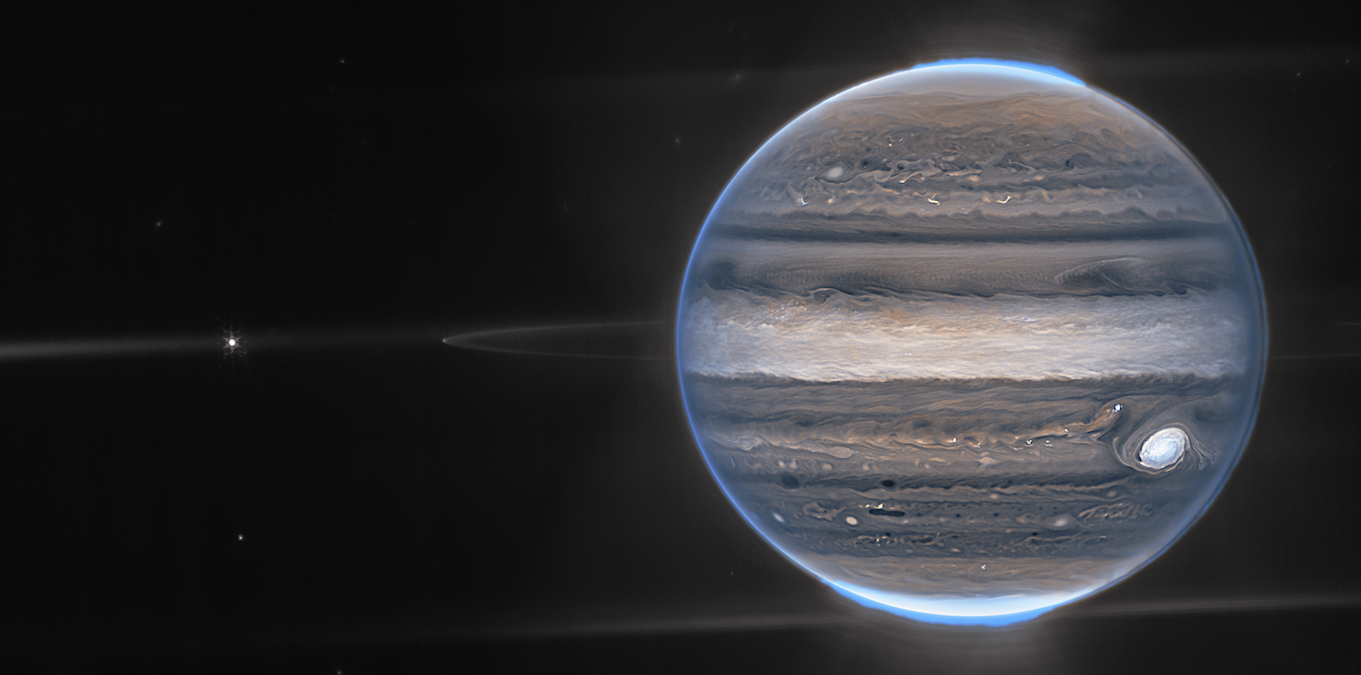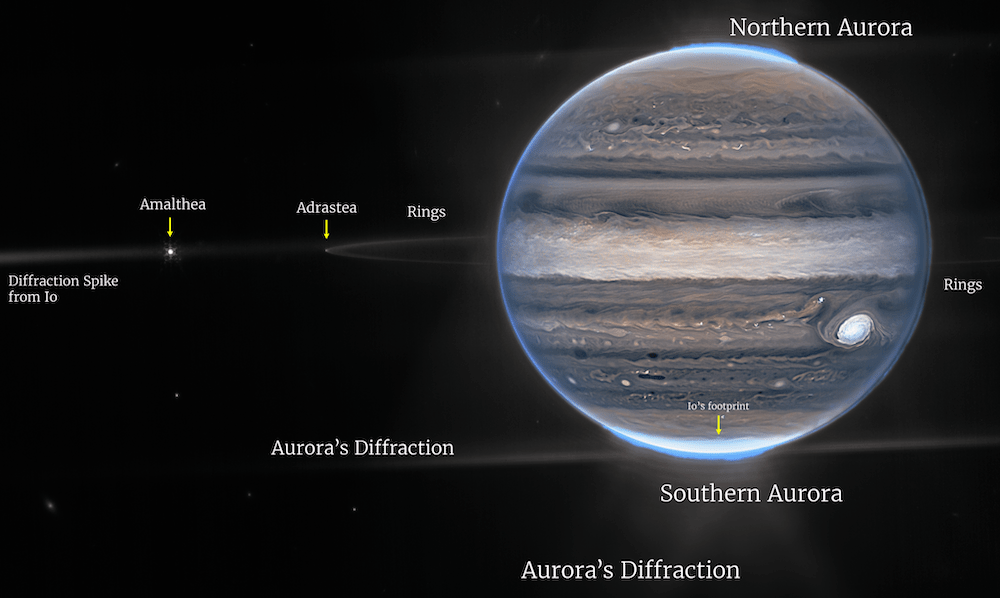
Hey, remember that giant telescope that launched on Christmas and blew our minds with awesome galaxy photos? Well, it’s back. NASA’s James Webb Space Telescope shared its official images of the king of gas giants, Jupiter. The Webb telescope continues to blow our minds with every new picture release.
Jupiter is famous for being the largest gas giant in our solar system, and of course, who can forget its great red spot? But did you know that Jupiter has rings? It even has auroras like Earth, just much bigger.
The newest photos released by JWST show Jupiter in near-infrared light using the NIRCAM instrument. This form of light has much longer wavelengths and can’t be seen by human eyes. But the false color images processed by Judy Schmidt, a citizen scientist, give us a new view of Jupiter in all its glory.
James Webb telescope image shows off Jupiter’s faint rings
While not as big and flashy as Saturn’s rings, we have known about Jupiter’s faint ring system for some time now. However, it is challenging to capture them in photos. Several probes like Voyager, Juno, and Galileo have been able to catch them when edge-on or in the perfect lighting conditions. JWST’s Jupiter images show the rings as clear as day, and just how tiny they are.
Alongside the rings, the photo also captures auroras on Jupiter’s north and south poles, but that’s not all. Two of Jupiter’s 80 moons, a diffraction spike from Io, and even galaxies show up in the image. That’s right, in a photo meant to show a planet, JWST still captures light from galaxies many lightyears away.

Even scientists were amazed by how well the images came out. In a NASA blog post, Imke de Pater, a professor and astronomer at the University of California, Berkeley, said, “we hadn’t really expected it to be this good, to be honest.” This new image from JWST captures practically every part of Jupiter being studied today, and it will hopefully lead to a better understanding of our largest planetary neighbor.
These photos were processed by one citizen-scientist
The fascinating thing about this photo is that it wasn’t processed by a team of NASA scientists or researchers at one of the many universities or observatories but by a citizen scientist named Judy Schmidt. With a background in digital art and design, Schmidt began to process images from Hubble and came in 3rd in an ESA contest in 2012.
While this is just a hobby for her, astronomers have taken notice and have asked Schmidt to collaborate on work on other image sets, including Webb’s Jupiter shots. This is all possible because the data captured by Webb is available to the public, raw and unedited.
This photo of Jupiter is actually a composite of many different images. This complicates the process because as the pictures are taken, the surface of Jupiter moves, spinning once every 9.5 hours. To counter this, Schmidt has to edit some of the images so the bands don’t appear smeared across the surface.
Teams are just now getting started, digging into the data collected by Webb of Jupiter. Hopefully, this will uncover new insights into what goes on under the planet’s surface or more about Jupiter’s rings. However, without citizen scientists like Schmidt, none of this would be possible.
FTC: We use income earning auto affiliate links. More.



Comments